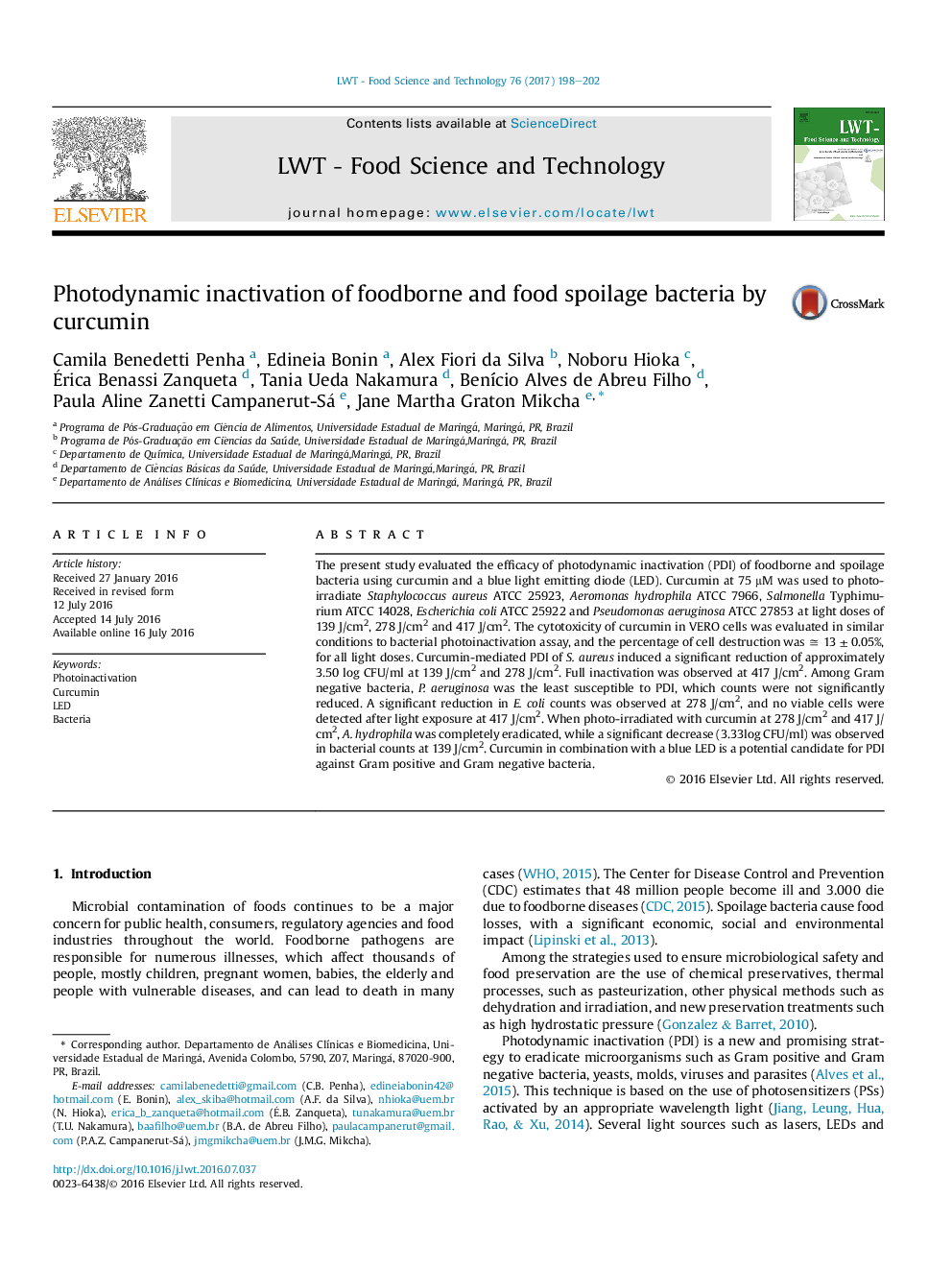| Article ID | Journal | Published Year | Pages | File Type |
|---|---|---|---|---|
| 5769109 | LWT - Food Science and Technology | 2017 | 5 Pages |
â¢Bacterial viability was reduced after exposure to curcumin at 75 μM and LED light doses of 139 J/cm2, 278 J/cm2 and 417 J/cm2.â¢Aeromonas hydrophila displayed more sensibility to the treatment than other Gram negative bacteria.â¢Pseudomonas aeruginosa was the most resistant to photodynamic inactivation mediated by curcumin.
The present study evaluated the efficacy of photodynamic inactivation (PDI) of foodborne and spoilage bacteria using curcumin and a blue light emitting diode (LED). Curcumin at 75 μM was used to photo-irradiate Staphylococcus aureus ATCC 25923, Aeromonas hydrophila ATCC 7966, Salmonella Typhimurium ATCC 14028, Escherichia coli ATCC 25922 and Pseudomonas aeruginosa ATCC 27853 at light doses of 139 J/cm2, 278 J/cm2 and 417 J/cm2. The cytotoxicity of curcumin in VERO cells was evaluated in similar conditions to bacterial photoinactivation assay, and the percentage of cell destruction was â 13 ± 0.05%, for all light doses. Curcumin-mediated PDI of S. aureus induced a significant reduction of approximately 3.50 log CFU/ml at 139 J/cm2 and 278 J/cm2. Full inactivation was observed at 417 J/cm2. Among Gram negative bacteria, P. aeruginosa was the least susceptible to PDI, which counts were not significantly reduced. A significant reduction in E. coli counts was observed at 278 J/cm2, and no viable cells were detected after light exposure at 417 J/cm2. When photo-irradiated with curcumin at 278 J/cm2 and 417 J/cm2, A. hydrophila was completely eradicated, while a significant decrease (3.33log CFU/ml) was observed in bacterial counts at 139 J/cm2. Curcumin in combination with a blue LED is a potential candidate for PDI against Gram positive and Gram negative bacteria.
